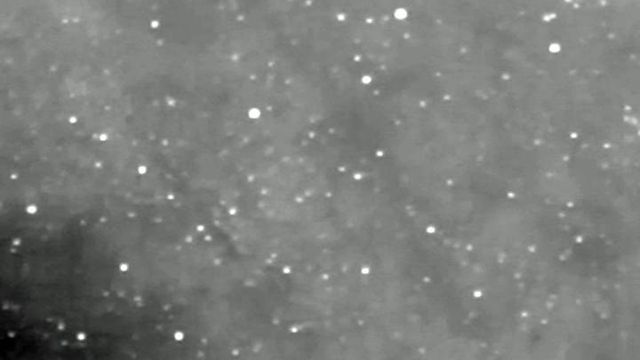Nova, ocean moon light up the weekend sky
If you've got a bit of cabin fever from staying to avoid the heat this weekend, venture out once the sun sets for a planetary show in the southwestern sky.
Posted — UpdatedIn April, a star near the teapot in the constellation Sagittarius suddenly became bright enough to see from Earth. The phenomena was independently discovered by two amateur astronomers, one using a relatively small 8" reflecting telescope. Within hours, the star increased in brightness by over 100 times before dimming just a few days later.
Now being called a possible nova, this previously inconspicuous star is known as Nova Sagittarii 2012. In May, NASA's STEREO-B spacecraft, which normally is focused on our sun, captured a rare video of this nova brightening into view.
The word nova translates to "new star" and refers to the sudden appearance of a bright point of light that wasn't seen before. Actually, a nova is an old, compact star that has material fall onto its surface, causing it to become brighter for a short time. Scientists are careful not to refer to this as a supernova, which is thousands of times more powerful and ends in the destruction of that star.
Saturn and Mars line up with the moon
If you've got a bit of cabin fever from staying to avoid the heat this weekend, venture out once the sun sets for a planetary show in the southwestern sky. The waxing gibbous moon will line up on the left, with Saturn in the middle and orangish Mars on the right. These are great targets for even small telescopes and binoculars, and even Saturn's rings should be visible.
Look above Saturn for the slightly yellowish point of light. That is Saturn's moon Titan.
Researchers studying data from NASA's Cassini spacecraft announced on Thursday that gravitational attraction of Titan and Saturn indicates that tides of 30 feet are sloshing around in a massive ocean under the moon's icy outer shell. Saturn's pull is so strong and Titan so elastic that it elongates like a football when orbiting close to Saturn and becomes more spherical when further from the planet.
Copyright 2024 by Capitol Broadcasting Company. All rights reserved. This material may not be published, broadcast, rewritten or redistributed.





